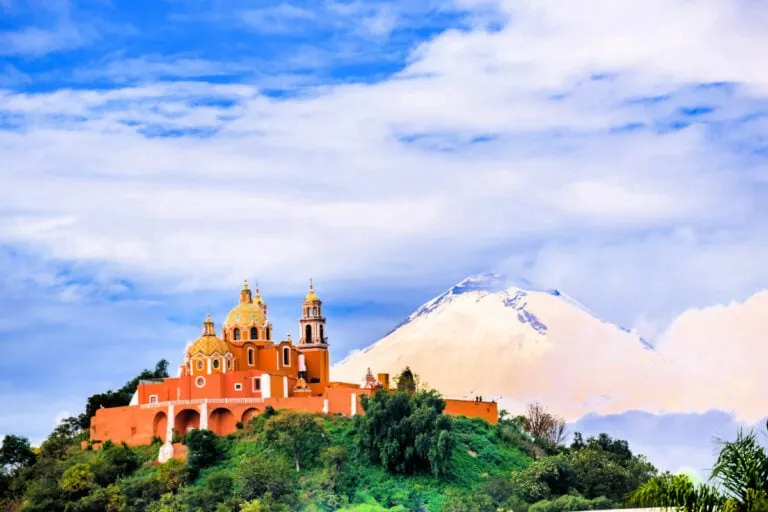Mexico is currently one of the most popular international destinations, having hosted over 30 million visitors last year alone and is poised for additional growth in 2023, and though Cancun and Los Cabos lead booking trends, they’re not the only ones behind this resounding success.
Now more than ever, travelers are seeking more unique, authentic experiences when going abroad, particularly Americans who, for the best part of the previous three years, were forced to be confined at home – unsurprisingly, interest in lesser-known, off-path sites has surged.
In Mexico, it’s the unsung ‘Magical Cities’ that are helping boost recovery, and five in particular are being touted as the next tourist hotspots:
Tequisquiapan
The first one is Tequisquiapan, a traditional municipality in the state of Queretaro, in Central Mexico, famous for its cobblestone streets, rustic buildings with wooden windowsills and wrought iron ornaments, and its colonial legacy.
As reported by Cronica earlier this year, Tequisquiapan is one of Mexico’s criminally underrated wellness hubs, as besides the historical weight it carries as a 300-year-old settlement, it boasts a high number of resort spas and natural hot springs.

For decades now, Mexicans have been driving all the way here from neighboring Queretaro City and as far as Mexico City for weekend escapades, yet Tequisquiapan is only now reaching its global breakthrough.
At this year’s International Tourism Fait (FITUR), held in Madrid, it took home the award for best ‘Wellness Tourism Paradise‘: there are as many as 1,200 hotel rooms available, over 1,000 AirBnB stays, and more than 250 eateries where visitors can experiment with traditional Mexican cuisine.

Tequila
Though Tequila is not exactly an unheard-of gem, being a permanent feature in travel brochures on the cultural side of Mexico, it’s definitely not one to be underestimated amid the ongoing Mexican Reinassance, with over 334,000 guests registered between January and August of this year.
On average, this small, quaint town hosts half a million tourists per year, indicating it is on a clear path towards recovery, if not record-breaking figures come December, and this cannot be solely attributed to the trademark distilled beverage which originated in Tequila:

A perfectly-preserved colonial settlement of Spanish Mexico, home to a beautiful central plaza, regal palaces that combine elements of both Iberian and Moorish architecture, much like continental Spain, as well as the iconic Church of Santiago Apostol, with its striking stone facade.
Owing to its rich History, architectural wealth, and the immaterial heritage that is tequila (the drink), made from the blue agave plant, native to the region, Tequila is one of the best destinations to sample some culture South of the border.

Cholula
Perhaps Mexico’s best-hidden secret and one most foreigners are yet to be let in on, Cholula is a literal ‘Magical Town‘ of the state of Puebla that has recently attained the distinction of being the most visited statewide.
Though it is attached to the state capital, Cholula has a unique character, and it stands on its own as a cultural center, divided into eighteen neighborhoods, each of them with its own patron saint, and concentrating both colonial-era and ancient landmarks.

The most impressive of them, the Great Pyramid, is the largest complex of its kind in the Americas, as well as the largest pyramid by volume in the world today.
It may not rise as high as Mayan structures across Yucatan, or the Pyramid of Giza in Egypt, but its base dimensions are much wider.
Other attractions in Cholula include the San Gabriel Franciscan Convent, established by the Spaniards in the 16th century – one of the oldest in the Americas – and the colorful, shop-lined Morelos Street.
According to local authorities, alongside other ‘Magical Towns’ of Puebla, Cholula has attracted more than 1.4 million this year already, 68 percent more than in 2022.

Izamal
Yucatan is best known for Caribbean beaches, state-of-the-art resorts and luxurious shopping, but there’s yet another side to the paradisaical peninsula foreigners are only now starting to discover: it is crammed with picturesque, Instagrammable towns that just ooze character.
One of those is Izamal, ‘The Yellow City’ of Yucatan, where the cobble-laden alleys are flanked by vibrant, jaune-colored houses; two cultures clash – Hispanic and pre-Columbian – and Spanish structures, erected out of Mayan stones, dominate the grid-like, yellow landscape.

Walking around Izamal, tourists will be met with the City of Hills, an archaeological complex that once housed a Mayan outpost before Spanish settlers stormed in and occupied the area, and a large Franciscan Monastery, whose open atrium is second in size only to the Vatican.
This year, the town has been experiencing a popularity boom as demand for cultural expeditions grows out of Cancun, roughly three hours away, and it is set to consolidate itself as a popular destination once the Maya Train launches December 1, with a stop in Izamal.
Credit: Source link

